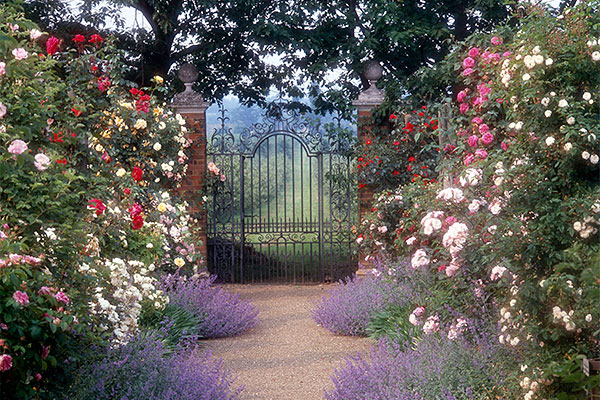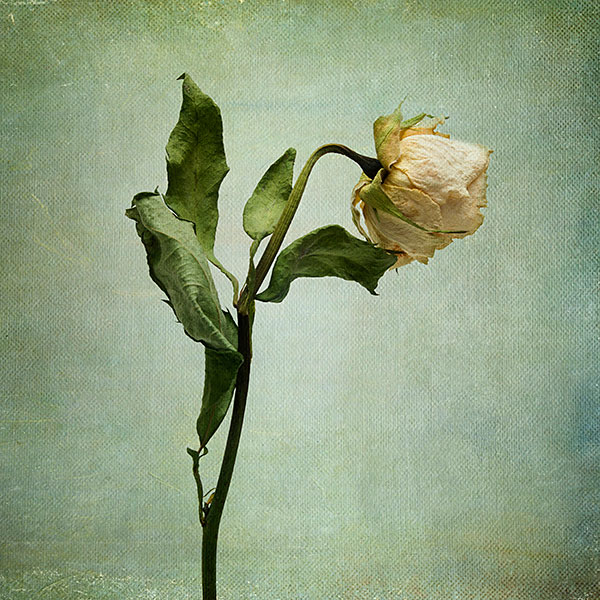Great literary gardens: from ‘Hamlet’ to ‘Lady Chatterley’s Lover’
Simply sign up to the Life & Arts myFT Digest -- delivered directly to your inbox.
Gardens, as anyone who has one will agree, are jolly hard work. There is always a bed to weed, a wilting stem to deadhead, another gust of leaves to rake. Yes, you can hire a gardener but they won’t be there to chase the squirrels away from your tulip bulbs first thing in the morning.

Even admiring the horticultural efforts of others is more than some can take. Jostling in the crowds at the Chelsea Flower Show for a peak at an ironic rendering of the suburban allotment? It can seem like too much effort for too little reward.
That leaves one option for the lazy gardens enthusiast: literature. The literary canon abounds with floral scents, riotous borders, lawns (of both the manicured and unruly varieties), parklands, orchards and shrubberies. And they offer the reader far more than something pleasing to the mind’s eye.
“Gardens feature prominently in literature because they offer an abundant metaphoric range of images that help propel fictive, poetic, and dramatic narratives,” says Sheila T Cavanagh, professor of English at Emory University.
“Gardens easily represent complicated relationships between nature and nurture. They also contain both images of unbridled human experiences, such as sexuality and fertility, and references to the trappings of civilisation, including human interventions into natural processes.”
Let’s begin, then, with the Bard and a warning from garden historian Twigs Way: “One should never take mention of gardens and flowers in Shakespeare at face value”. Far from providing a fragrant, floral backdrop to the action, gardens in Shakespeare’s plays often denote sinister goings-on, particularly when used as a substitute for the state. In Hamlet, the prince laments the plight of Denmark: “Fie on’t! ah fie! ‘tis an unweeded garden/That grows to seed; things rank and gross in nature/Possess it merely.” The garden’s degeneration marks Hamlet’s angst at the ascent of murderous uncle Claudius to the throne, while the new king’s incestuous marriage to Hamlet’s mother is that which is “rank and gross in nature”.
In Richard II, gardens need constant attention, and denied this they will quickly lapse into unruliness. The dying John of Gaunt deplores England’s descent from “this other Eden — demi paradise” to a realm that “hath made a shameful conquest of itself”. And later, it is the Gardener who reveals the King’s downfall. “O, what a pity is it that [Richard] has not so trimmed and dressed his land as we this garden!” he notes, and, with echoes of the king’s mismanagement of his nobles, issues the wonderfully lyrical order: “Bind thou up young dangling apricocks”.
In Romeo and Juliet, the fortified garden of the Capulet household signifies both the barriers to the protagonists’ romance and their determination to overcome them. Asks Juliet of Romeo: “How cam’st thou hither, tell me and wherefore? The orchard walls are high and hard to climb.”

When it comes to other literary trysts there is, of course, Lady Chatterley’s Lover. Though it is chiefly in the forest that the lady of the house, Connie, and her husband’s gamekeeper Mellors liaise, DH Lawrence draws to mind the Garden of Eden. The curling bracken is serpent-like and invites temptation.
Mellors entwines the pair with flowers. We learn that, “In her navel he poised a pink campion” — a delicate and deliberate gesture both on the part of Mellors and Lawrence, for campion is said to have been used to treat snakebites; a salve to shame.
Sexual tropes are commonplace in literary gardens, and at times they are comical. Dickens, for instance, offers us in Nicholas Nickleby a next-door neighbour not only fond of tossing cucumbers and marrows at Mrs Nickleby, but of doing so with “the velocity of a sky rocket”. Such behaviour renders her son Nicholas “fretted almost beyond endurance”. “You know there is no language of vegetables which converts a cucumber into a formal declaration of attachment,” he tells his mother, who herself appears rather pleased by the attention.

The sexual undertones of Jane Austen’s gardens and landscapes are generally less frivolous. “Timid and shy” Fanny, the protagonist of Mansfield Park, is dismayed to learn of her cousin, and crush, Edmund and anti-heroine Miss Crawford “spending their time pleasantly” together outdoors. The discovery of an unfastened garden gate had enticed the pair to stray not only into the wilderness adjoining Mansfield Park but into the parkland beyond.
Austen returns to the notion of garden gates as a portal to the illicit and forbidden. “Here is a nice little wood if one can but get into it,” laments the fast-living Miss Crawford. “What happiness if the door should not be locked! But of course it is; for in these great places the gardeners are the only people who can go where they like.”
Her envy of the gardeners reveals the strictures of early 19th-century society and class. It was not until later in the century that gardening became fashionable among middle-class women, says Sara Lodge, a lecturer in English at the University of St Andrews. A sense that “women didn’t just need a room of their own, but a garden of their own in which to find space” developed in tandem, Lodge says. This brings us to Virginia Woolf. Woolf’s love of gardening runs through her books and her collective works mention 94 different flowers — as counted by US academic Elisa Kay Sparks. In her 1919 novel Kew Gardens the garden is one of menacing disquiet: “Thus one couple after another with much the same irregular and aimless movement passed the flowerbed and were enveloped in layer after layer of green blue vapours.” Katrina Dodson, a literary translator, suggests that: “Characters often seem to get a bit restless in gardens, despite the peace they are supposed to inspire”.


This is certainly true of Mr Rochester’s orchard garden in Charlotte Brontë’s Jane Eyre. Though Jane turns to the garden for respite, it is never fully obtained. During the “sweetest hour” of an “Eden-like” midsummer’s eve, she cannot prevent the scent of Rochester’s cigar smoke polluting the “sweet-briar and southern-wood, jasmine, pink and rose” perfuming the air.
Brontë also uses the orchard to develop her characters. It is “sweet and pure”; a reflection of Jane’s character in the eyes of Rochester and the reader. Rochester’s tainted character is shown when he describes his grand home, in which his maddened wife is imprisoned, as an artifice “where the gilding is slime and the silk draperies cobwebs”.
When romance threatens as the pair converse in an arbour, it is a “half-blown” rose Jane is presented with; ivy “whispers” against her hair — a symbol of her fidelity. Like the ivy, gardens in literature are bound to endure; excellent news for those who prefer to admire horticulture from their armchair.

Photographs: Gap Photos/Julie Dansereau; Bridgeman Images; Medici/Mary Evans
Comments